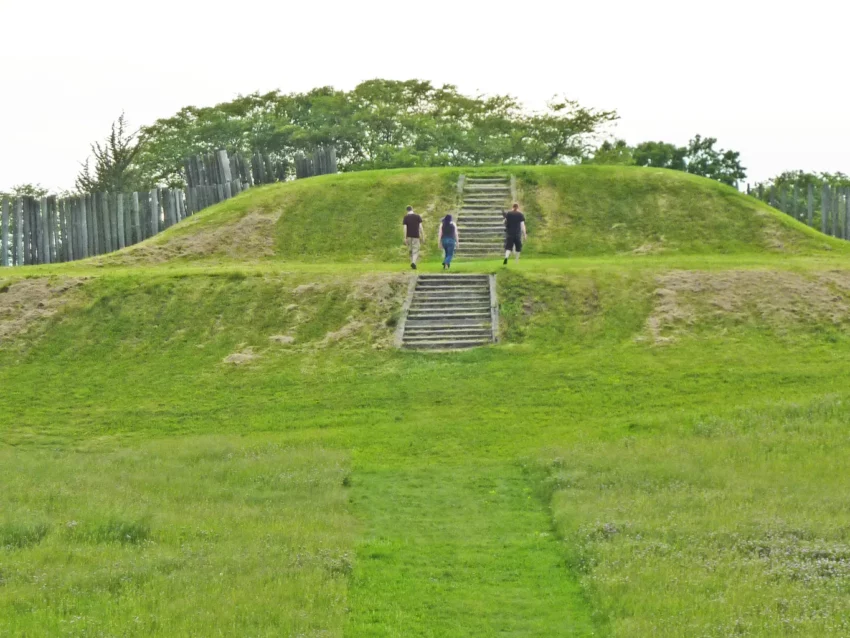Aztalan State Park: A Glimpse into Ancient History
Aztalan State Park is in the Town of Aztalan, Jefferson County, Wisconsin. Established in 1952, it became a National Historic Landmark in 1964 and was added to the National Register of Historic Places in 1966. The park spans 172 acres along the Crawfish River.
Get your dose of History via Email
Ancient Mississippian Culture
Aztalan was an ancient Mississippian culture settlement that thrived from the 10th to 13th centuries. Indigenous people built massive earthwork mounds for religious and political purposes. These mounds were part of a vast culture with settlements throughout the Mississippi River valley. Their trading network extended from the Great Lakes to the Gulf Coast and into the Southeast of present-day United States.
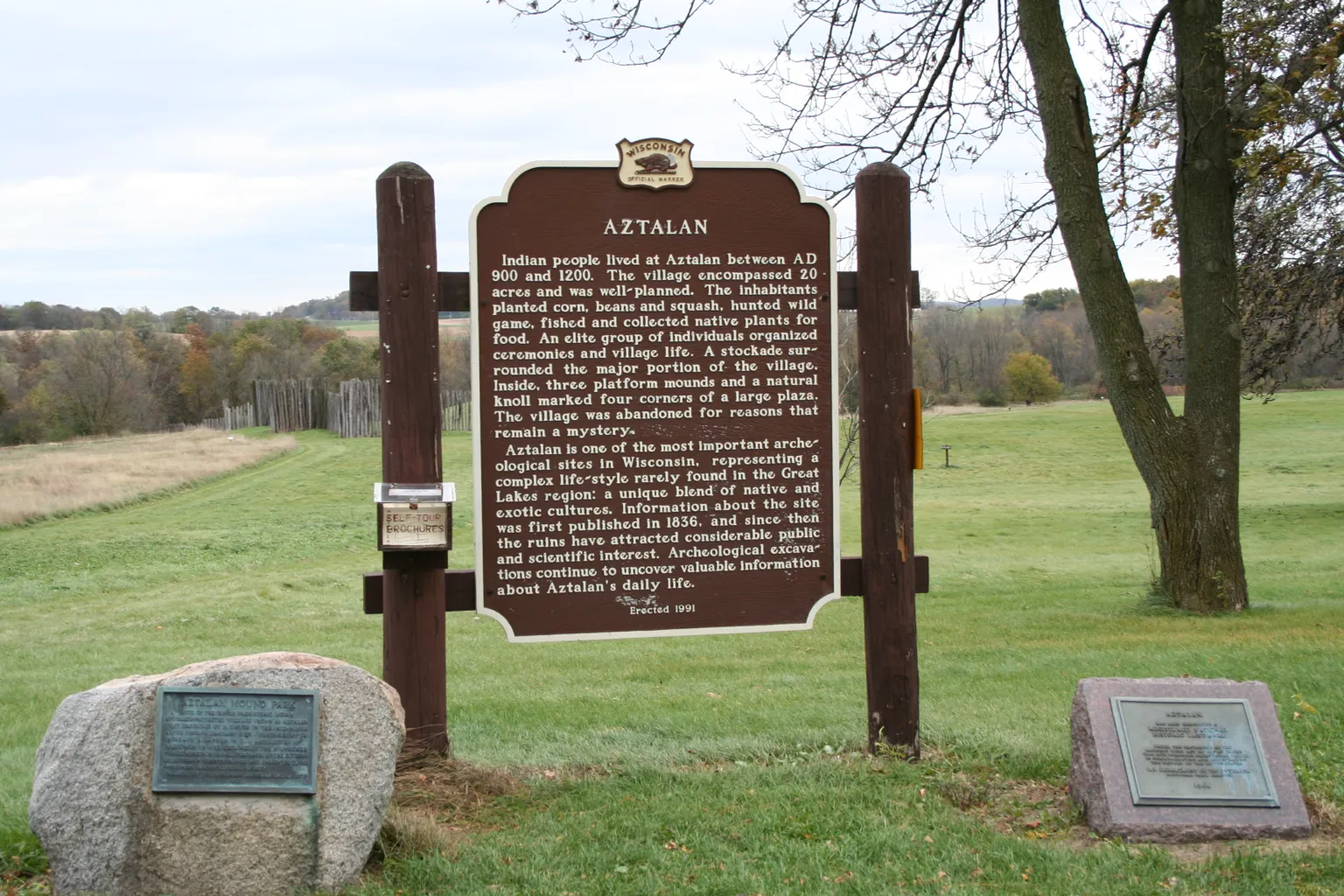
Pre-history (900–1300 CE)
Aztalan was settled around 900 CE by the Middle Mississippian tradition. The chief center of this culture was Cahokia, located in present-day Illinois. Cahokia had a population of 20,000–30,000 at its peak. These settlements featured earthwork mounds, stockades, houses, and decorated pottery. The residents of Aztalan traded with other settlements, utilizing rivers for transportation. Artifacts found include copper from Michigan, shells from the Gulf Coast, and Mill Creek chert from the Midwest. The settlement was abandoned between 1200 and 1300 CE, possibly due to environmental depletion, warfare, or the Little Ice Age.
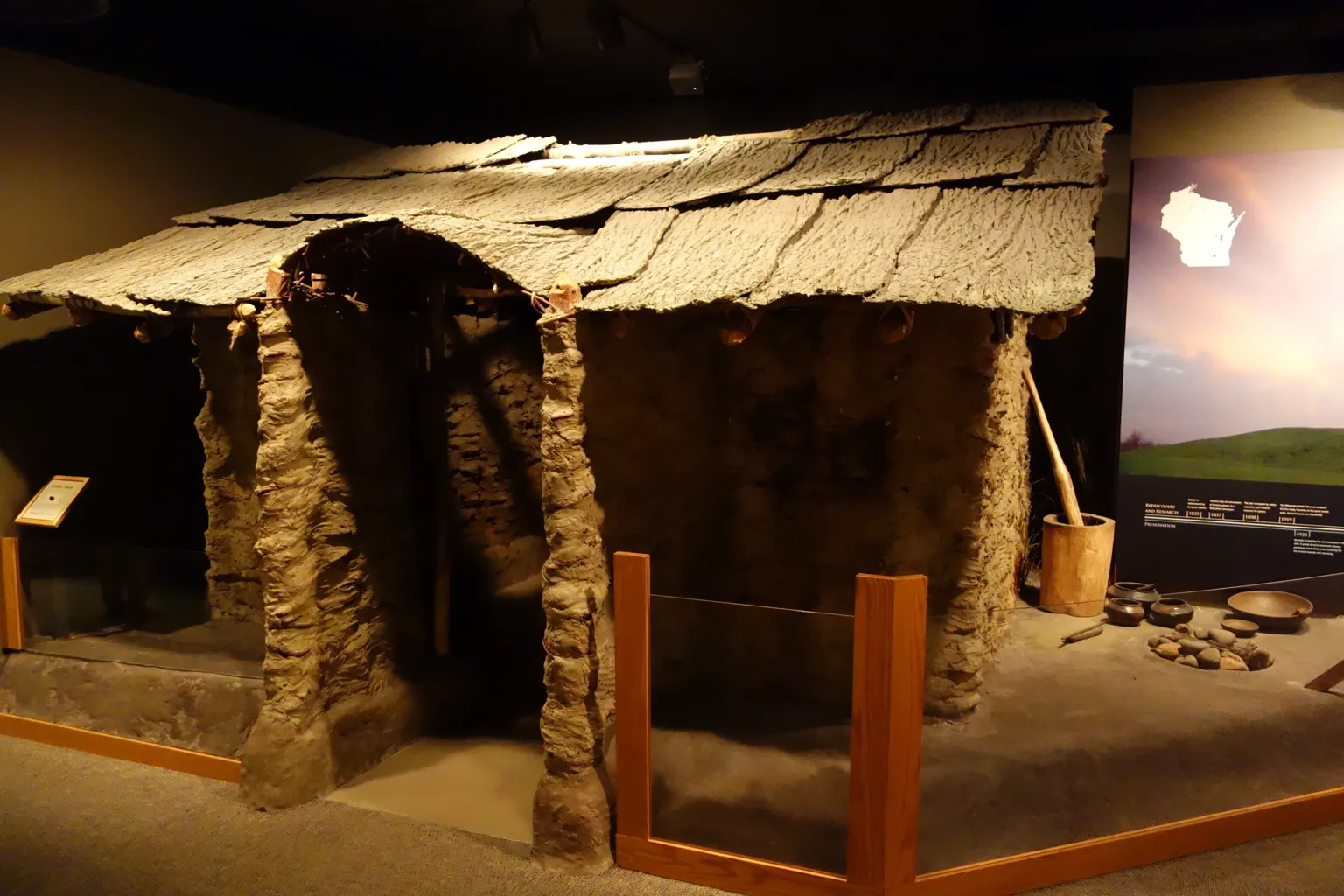
Life in Aztalan
Residents lived in circular or rectangular houses between the river and the eastern wall. They built homes around a central ceremonial plaza for rituals and gatherings. Posts for house frames were set in holes or trenches, and walls were made with wattle and daub. Roofs were covered with bark or thatch. Doorways faced south to block winter winds. Families slept on pole-frame beds, covered with tamarack boughs, deer skins, and furs. They stored food in pits and kept perishable items outside. Refuse and community storage pits were also outside.
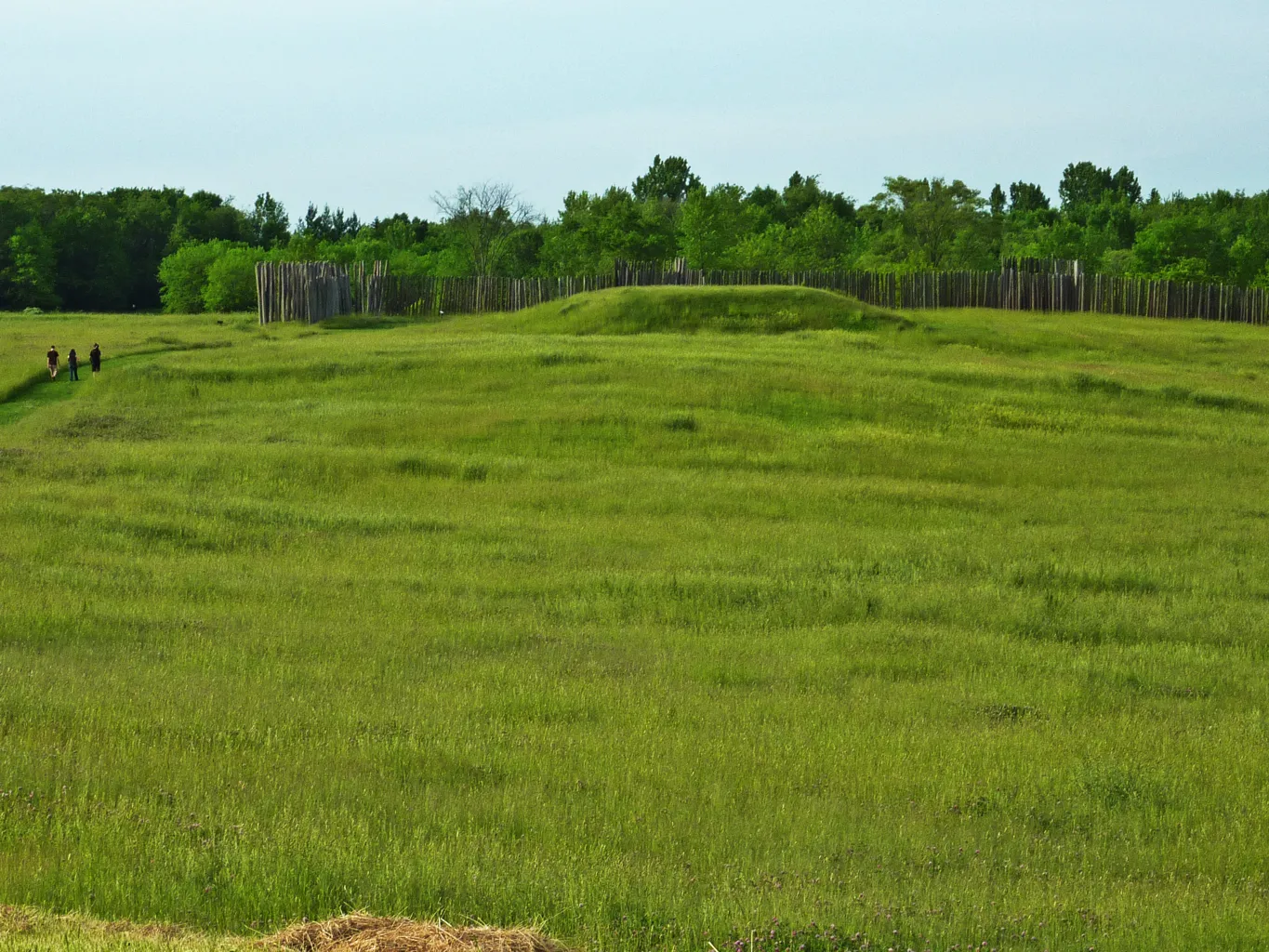
Food and Resources
The diet staple was cultivated corn, supplemented by gathered foods like acorns, nuts, and berries. Tobacco was grown for rituals. Deer was the primary meat source, with beaver, elk, fox, muskrat, and raccoon also hunted. Birds, turtles, mussels, and fish from the Crawfish River were also consumed. The people set up rock barriers called fish weirs for fishing. They caught catfish, bass, suckers, buffalo fish, pike, drum fish, and gar. Mussel shells were discarded in middens. Trees provided wood for various uses, while shells were fashioned into jewelry and tools. River clay was used for pottery. Traded items indicated status due to their rarity.
Physical Features
Mounds
Three platform mounds remain at Aztalan. The largest mound is in the southwest corner of the stockade, with another almost as large in the northwest. The smallest is along the east side near the Crawfish River. The largest mound was built in three stages, with steps leading to the top where a structure stood. This structure likely served for storage, ceremonies, or as a residence. The northwestern mound, used for burials, was also built in three stages. The eastern mound had a large open-walled structure with firepits inside.

Stockade
The settlement was surrounded by a palisade made of vertically set logs. Willow branches were woven through the posts, and a clay and grass mixture filled gaps. The stockade had bastions for defense and blended entrances for camouflage. Two outer stockades were built over time; one rotted, and the other burned. The exact purpose of the stockade remains unclear.
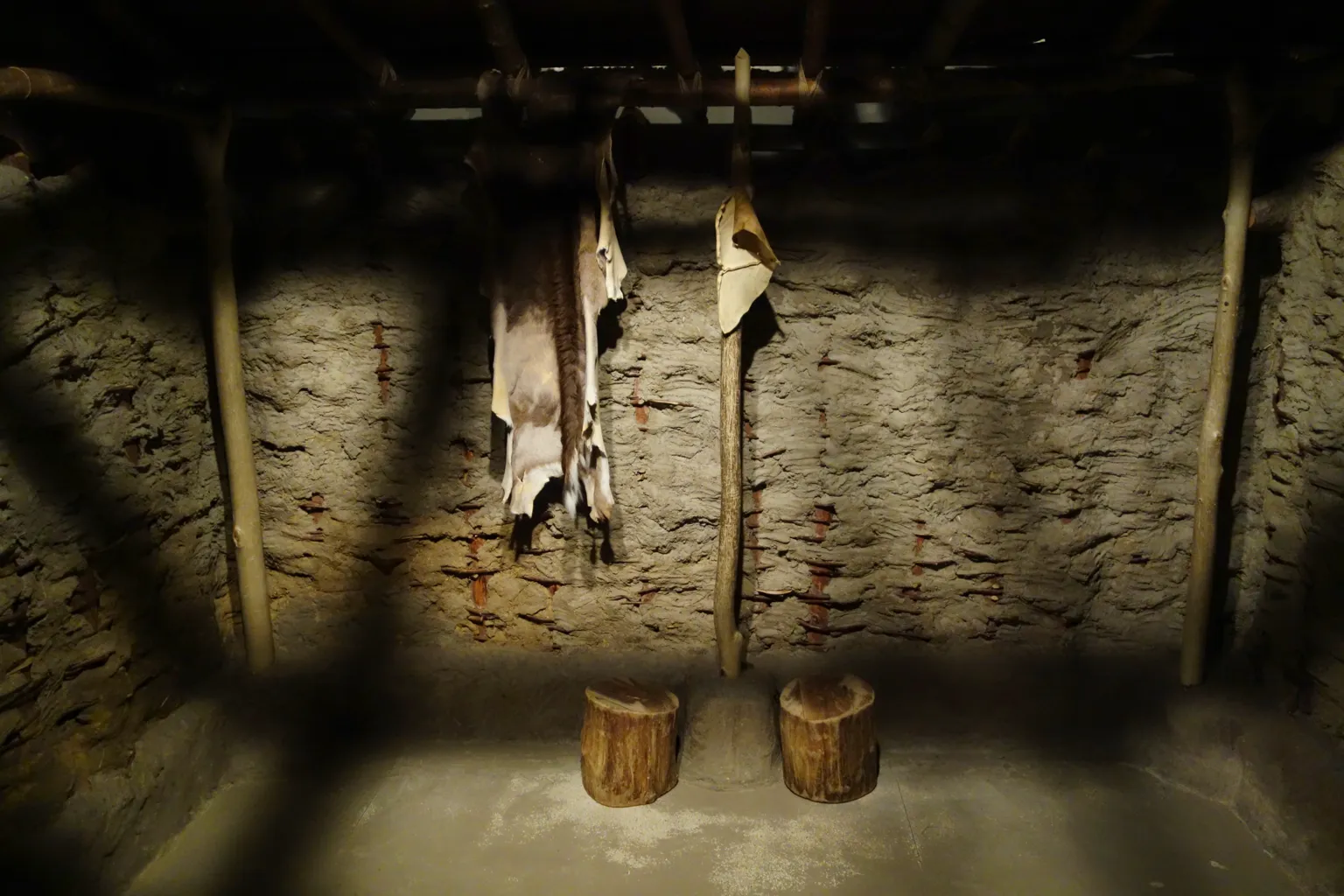
Modern Discovery and Preservation
Timothy Johnson discovered Aztalan’s ruins in 1835. The first rough survey was conducted in 1836 by N. F. Hyer. Despite efforts to preserve the site, it was sold and used for farming. In 1919, archeological excavations began under Dr. S. A. Barrett. Preservation efforts continued, and in 1945, the Wisconsin State Assembly directed a study for a state park. By 1948, 120 acres were purchased, and Aztalan State Park opened in 1952.
Aztalan was designated a National Historic Landmark in 1964 and added to the National Register of Historic Places in 1966. Portions of the stockade were reconstructed in 1968. Today, Aztalan State Park preserves this significant historical site, offering a glimpse into the ancient Mississippian culture.
Sources: Wikipedia

